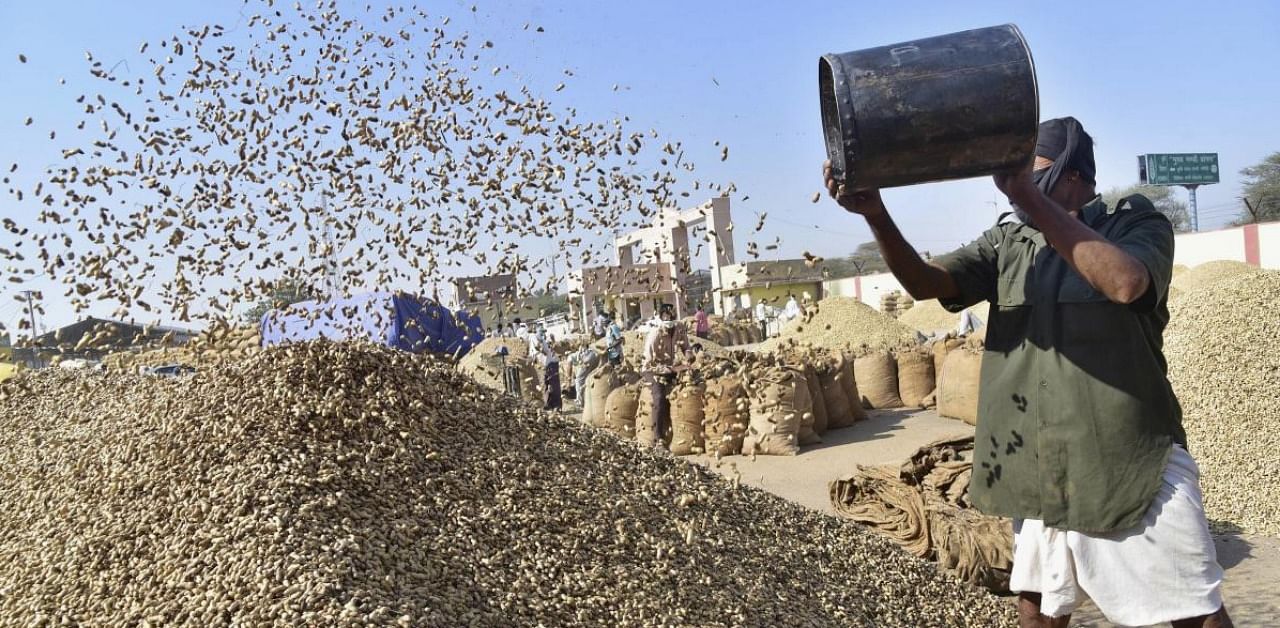Amidst continuing protests by Punjab and Haryana farmers against the Centre’s new farm laws, about 3-4 lakh tonnes of paddy arrives every day in Punjab mandis from Bihar and Uttar Pradesh. As the paddy marketing season comes to an end, it is estimated that more than three million tonnes of paddy has already reached Punjab mandis in the kharif marketing season this year. This is because in the Punjab mandis, the entire paddy harvest that is made available for sale is procured at the Minimum Support Price (MSP).
Unscrupulous traders purchase paddy at prices varying between Rs 800 to Rs 1,200 per quintal from Bihar and UP farmers and transport it all the way to Punjab, where it is sold at a MSP of Rs 1,888 per quintal. While numerous FIRs have been lodged against such traders, this is not the first year when truckloads of paddy (and wheat) have been routinely carried all the way from Bihar/UP to Punjab. For several years now, newspapers in the region have been reporting on the illegal marketing channels being explored by commodity traders to seek a higher price in Punjab. In other words, farmers and traders realise that MSP for paddy is the real price discovery.
In neighbouring Haryana, the High Court is looking into complaints questioning the rationale of barring UP farmers from selling their paddy harvest in Haryana mandis. In a similar case, the court has made it clear that traders can bring and market paddy from other states but cannot sell in the APMC mandis in Punjab.
A significant proportion of paddy procurement is confined to Punjab and Haryana. More than 95% of paddy growers in Punjab and 70% in Haryana get the benefit of MSP. But for other rice-producing states, their share is low, almost negligible. Only 7.3% of paddy growers in West Bengal and 3.6% in UP are able to sell at the procurement price. For instance, in the North-East states, only 1.1 lakh tonnes of paddy were procured against the production of 7.3 million tonnes in 2018-19. At the same time, 2.7 million tonnes of paddy were distributed through the PDS and other welfare schemes. If only paddy procurement within the region had been higher, the pressure to transport paddy from other states would have been far less. This clearly points to the crying need for expanding and strengthening the procurement operations.
Even the Commission for Agricultural Costs and Prices (CACP), acknowledging the lapse, recommends: “Majority of farmers in Uttar Pradesh, West Bengal and other Eastern and North-Eastern states, being marginal and small and having poor access to government procurement, resort to distress sale. Therefore, there is a need to bring more farmers in these states under the ambit of procurement operations.” This is not only true for the North-East states but is applicable for the entire country and for all crops for which MSP is announced. After all, it is not the fault of farmers if adequate procurement infrastructure has not been laid out in most states, as it has been done in Punjab and Haryana.
Just because only 6% of farmers in the country are able to sell their crops at MSP does not mean that the remaining 94% are happy with the markets. A majority of farmers do not understand the MSP system. Former agriculture minister Sharad Pawar had informed Parliament in 2009 that 71% of farmers are either unaware of or do not understand the concept of MSP. Unfortunately, ignorance is being cited as a virtue as far as the delivery of MSP is concerned. Perhaps this also explains why farmers’ protests against the new farm laws are predominantly confined to Punjab and Haryana.
Farmers need to know how an initiative taken by T N Prakash, a former chairperson of the Karnataka Agricultural Prices Commission, has over time been able to significantly enhance farm incomes for small and marginal farmers growing nutritionally-rich crops -- ragi and tur. Instead of following ‘one MSP, one nation’ philosophy, Karnataka provided a bonus of Rs 450 per quintal for ragi in the 2014-15 cropping season, thereby transferring an average additional income of Rs 15,725 to each of the farmers who came for procurement. Similarly, for tur legume, it provided a bonus of Rs 450 per quintal, resulting in a record procurement, providing an average additional income of Rs 22,500 in the bank accounts of all those who registered for tur procurement. This clearly shows that just by providing MSP for crops grown in marginal areas, farm incomes were substantially enhanced. For farmers living on the edge, this comes as a big succour.
Drawing from the Karnataka experience, Andhra Pradesh has issued a notification directing the state agencies to procure six other predominantly cultivated crops of the state, which are not covered under the 23 crops that the Centre announces MSP for every year. To give impetus to millets cultivation, Odisha government had procured 18,000 quintals of ragi from producers in the 2018-19 cropping season. Chhattisgarh had announced that it would procure paddy from farmers at a price of Rs 2,500 per quintal for 2018-19 kharif season. In addition, Karnataka had also provided deficiency payments for crops like onion, potato, tomato, chilli and mango. Haryana, too, had introduced deficiency payments, but it didn’t succeed as expected.
A mechanism therefore needs to be established to make MSP a legal right for farmers. Farmers need a vast network of regulated mandis like in Punjab and Haryana. That will be the real freedom for farmers, when they are assured of getting MSP wherever they sell their crop.
(The writer is an agricultural economist)
